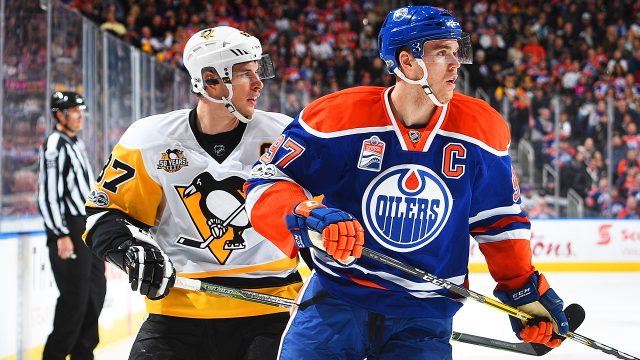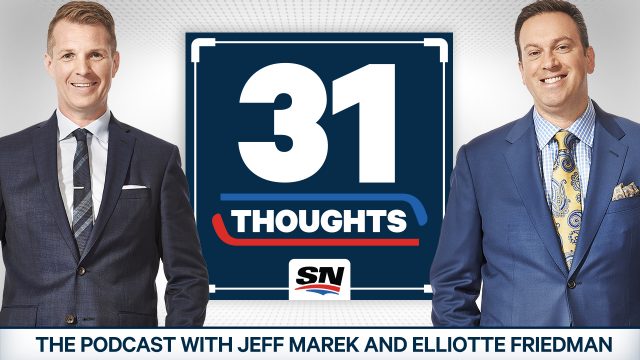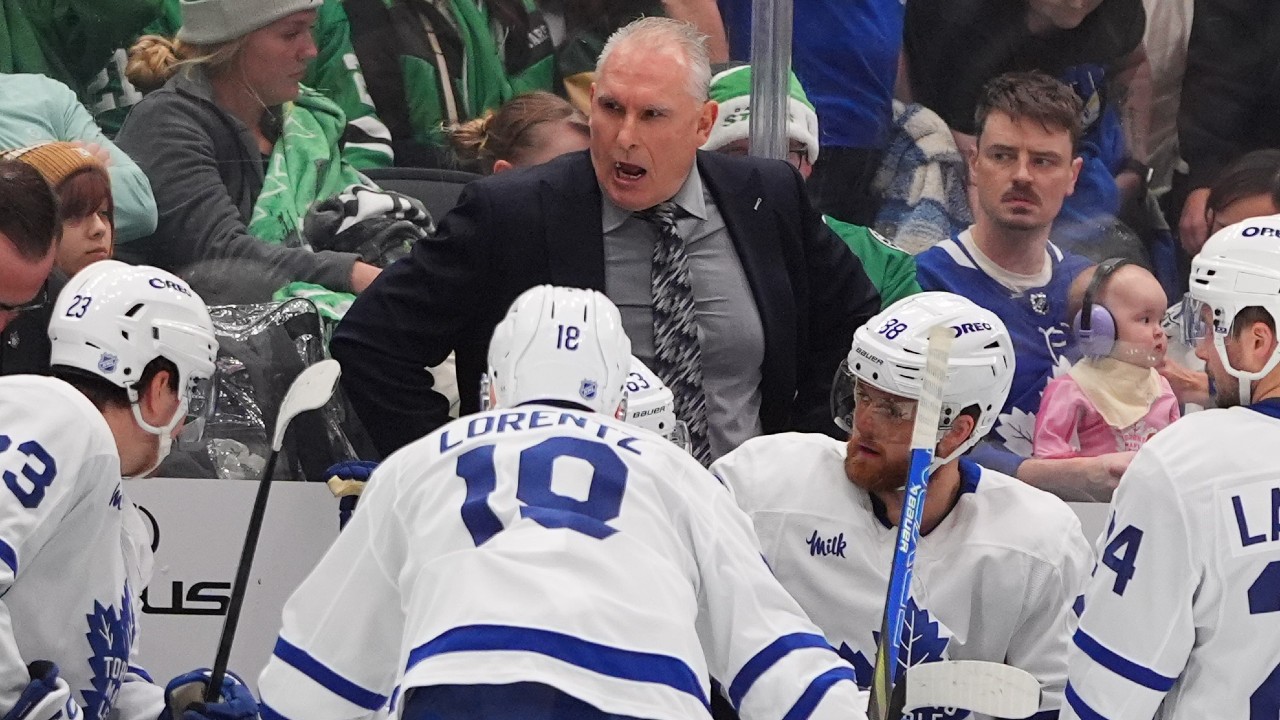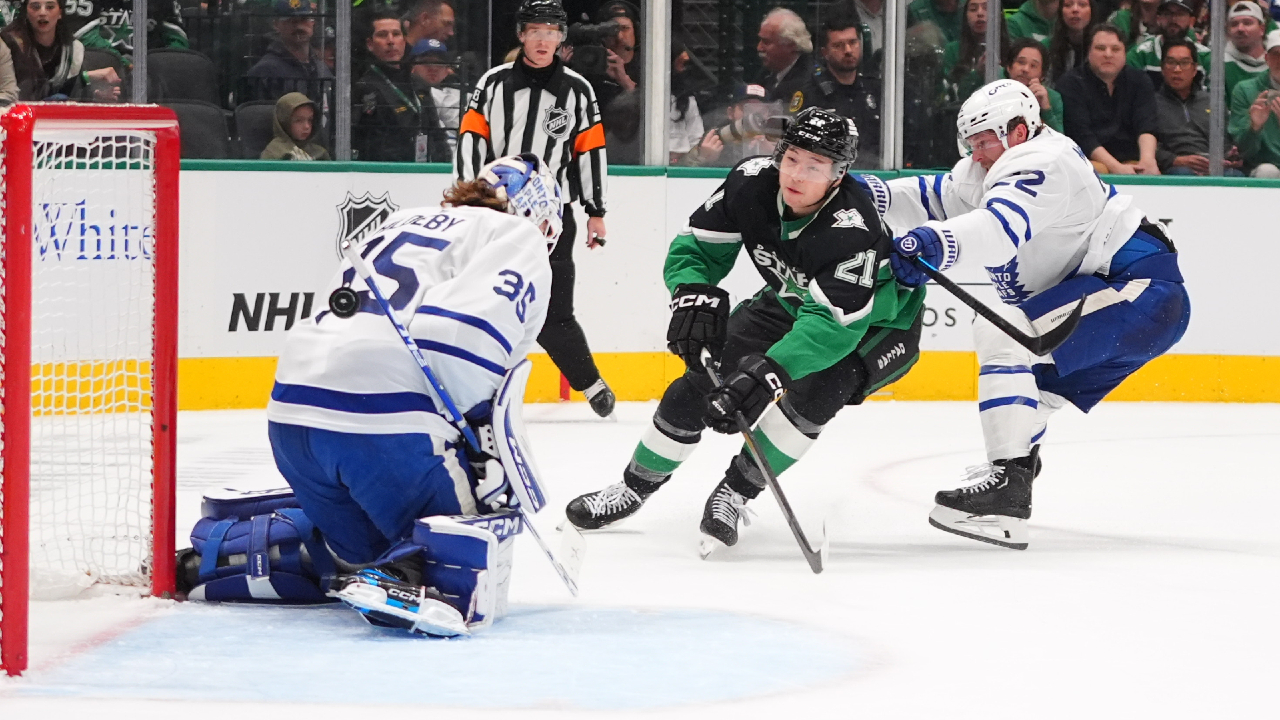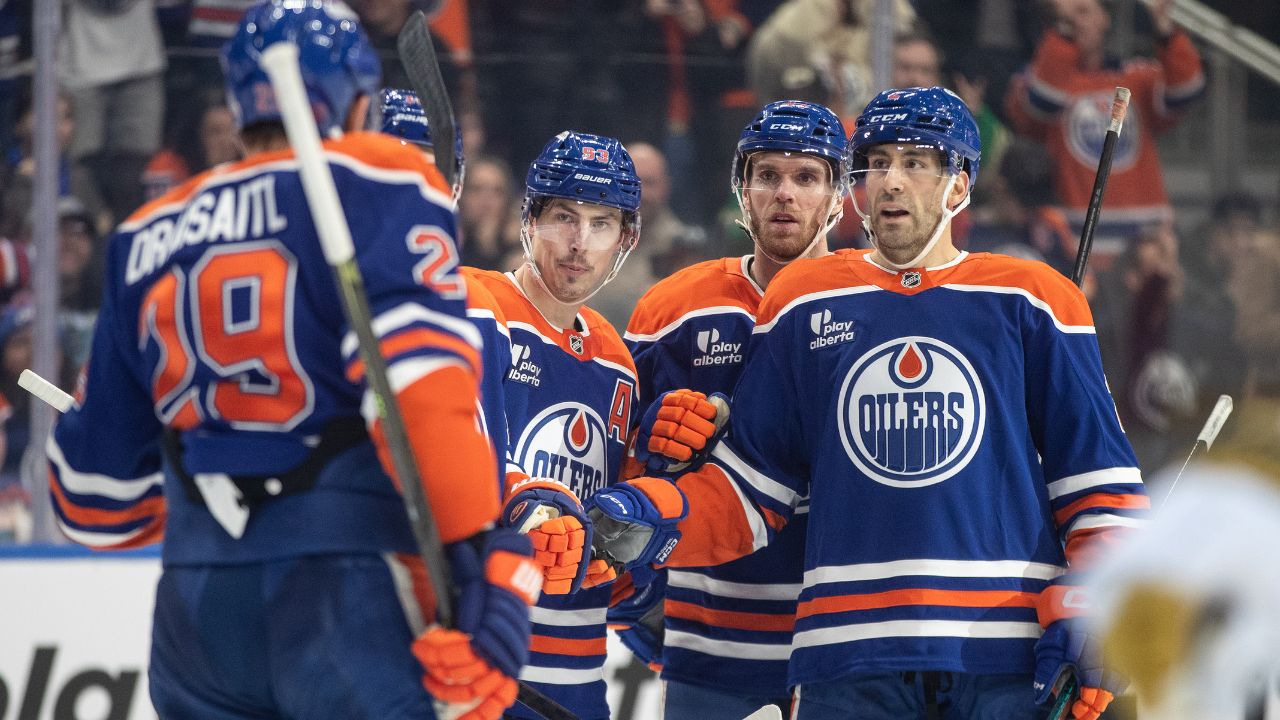
It’s Dec. 1 and while I wish we could be talking about season projections and making bold claims about what will be coming when puck drops, the fact is we are left floating in an uncertain time with many questions still to be answered.
The main discussions in NHL circles right now are all about financials. How much will players be paid, how much escrow will be clawed back, and how much salary will be deferred to future seasons. These topics aren’t what NHL fans get excited about.
But, once this all gets sorted (and there remains plenty of optimism it will eventually) there are a number of unfinished storylines still to resolve — and playing armchair GM to a few of them gets the blood flowing again. Rosters are still being constructed for the coming season and more than a few notable contracts still have to be signed. The World Junior Championship is coming up in a few weeks and if NHL training camps aren’t open soon, a few more players could be added to that event.
So, even after the business between the NHL and the NHLPA is resolved, there will still be a lot of team and player business to get to.
As we await further news on what a 2020-21 season might bring, here are some other unresolved storylines that will rise to the top again at a later date.
REMAINING FREE AGENTS
In any normal season the unrestricted free-agent class would be mostly bare this long after the market opened, but for many reasons there are still a handful serviceable and impactful players available to sign.
Because of the flat cap at $81.5 million, 16 NHL teams are either over the regular-season ceiling or within $2 million of it. Because of those tight squeezes, other players could still be available at a discount via trade, which is another market for teams who hold cap space to target.
The conditions for the remaining UFAs couldn’t be much worse. As the NHL and NHLPA negotiate over financials for the coming season, it’s not clear what players will owe in escrow, or how much more salary they will have to defer. Those factors could also play a role in salary structure. The most motivated buyers — those with cap space and a clear mandate to win now — have mostly already spent their money and made their investments for the 2020-21 season. For the most part, the remaining teams first want to make sure there is a season and, once that is settled, will likely be active to fill out their rosters and get a boost. And there certainly are some interesting names available to them.
Mike Hoffman: The best scorer left in unrestricted free agency, Hoffman was well on his way to back-to-back 30-goal seasons when the pandemic halted the regular season, finishing with 29 in 69 games.
Travis Hamonic: The right shot defenceman led all Calgary Flames blueliners in average shorthanded ice time last season and would be a great add for anyone needing a shutdown player. His offensive upside is low, with just 12 points last season, but this acquisition would be made with an eye to improving on defence.
Sami Vatanen: For a little more offence from the back end, right shot Sami Vatanen is still available. The New Jersey Devils’ leader in average power play ice time from the blue line had a strange season, where he was traded while injured at the deadline to the Carolina Hurricanes, but only played seven games with them in the summer playoffs.
Mikael Granlund: Maybe a good buy-low target, Granlund is just two seasons removed from scoring 67 points and did score 17 goals in 63 games with the Nashville Predators in 2019-20.
Anthony Duclair: Interesting one here. Duclair and the Ottawa Senators couldn’t come to terms on an extension following the best goal-scoring season of his career (23 in 66 games) as he set out to represent himself in negotiations. Duclair turned just 25 in August and so is young for a UFA.
Zdeno Chara: Look, we all expect him back in Boston on a cheap, one-year deal if Chara decides to play another season. He’s staying close to the community, delivering Thanksgiving pies last week.
BIG UNSIGNED RFAs AND CAP SQUEEZES IN NEW YORK AND TAMPA BAY
While there are some solid players still available on the UFA market, the remaining unsigned RFAs has the better pool of players at the top. If ever there was an off-season for a competitive offer sheet to put a team in a bind this is it, and it’s telling we’ve yet to see one.
Some RFAs do take this long to sign in normal circumstances — Brayden Point, for instance, didn’t re-up with the Lightning until late September last year.
The difference now, of course, is that it’s really not clear how some of these players will fit under the cap. Trades will likely need to be made to clear room in some of these cases.
The two teams that are in a particular bind are the Tampa Bay Lightning and the New York Islanders. The Lightning’s situation is very well documented, and we took a look at their squeeze after Mikhail Sergachev signed his bridge contract last week.
The Islanders are in a similar spot, with just $3.9 million in projected cap space under the regular-season limit and RFA Mat Barzal still to sign (spoiler alert: he’ll get more than that). If Point is any indication, Barzal could command around $7 million on a short-term bridge deal — but remember, Tampa often gets their players at a discount. And if Barzal and the Islanders were to lock in for max term or something close to it, the AAV would shoot up much higher since some of his UFA years would have to be bought.
Teams can go over the regular-season cap by 10 per cent in the off-season, so there is room for the Islanders to work with now. But, like Tampa, some trading would need to happen before the season starts to make them compliant. The Islanders already have nine players on the roster making $5 million or more and four of their six highest-paid forwards have full no-trade clauses. We have to know exactly what Barzal’s price point is before knowing how much money New York would have to shed, but this is setting up to force them into a losing trade.
Barzal and Tampa Bay’s Anthony Cirelli have been the two most talked about RFAs because of the cap pinches their teams will face after signing them, but they’re not the only RFAs of note still out there. The Columbus Blue Jackets’ Pierre-Luc Dubois had somewhat of a breakout season in 2019-20 and really announced himself in the playoffs, where he posted 10 points in 10 games and centred a line that gave the Toronto Maple Leafs and Lightning fits.
The difference with Dubois and the other two is that the Blue Jackets have the cap space to get a deal done without having to make a trade that allows the dollars to work. Columbus has $9.2 million in salary cap room and Dubois remains the only player unsigned on the team.
Here are some of the other notable RFAs…
Vince Dunn: Young puck-mover with plenty of offensive upside and a great skater, Dunn is coming off his entry-level contract but the St. Louis Blues are without any cap space after bringing in Torey Krug from the UFA market. Dunn’s name has also been linked in trade rumours, so a re-signing is no guarantee.
MacKenzie Blackwood: Last season was a coming out party for Blackwood, who played 47 games for the Devils and posted a .915 save percentage and 2.77 goals-against average. He’ll turn 24 next week and is the clear future of the crease in New Jersey. They have over $17 million in cap space so that’s not an issue here. And Blackwood, a young goalie coming off his ELC, shouldn’t be overly expensive yet.
Ethan Bear: He was one of the great surprises out of Edmonton last season, leading all NHL rookies in average ice time per game and locking down a top-four role on the team. The Oilers are right up against the cap, too, but defencemen generally get bridge deals on their second contracts that help keep AAV down. That is likely to happen here as well, though some other roster move would need to accompany it.
CAP REALITIES AROUND THE LEAGUE
The crunches being felt by these teams who still have important contracts to figure out is a big deal but according to Cap Friendly 10 teams are currently over the regular season spending limit. While a few of those teams might be able to move roster pieces around the farm to get right, others still have trades to make.
Take the Arizona Coyotes for example, who are over the cap by roughly $2.7 million. Their top three defencemen all have trade protection. Oliver Ekman-Larsson was on the block ahead of free agency, but put a deadline on his willingness to waive his no-move clause and that came and went without a deal. Up front, only Phil Kessel has partial trade protection so there may be more possibility to figure something out up there, unless OEL opens the door to a move again.

With the cap staying flat at $81.5 million, GMs who built and planned their rosters under the belief that the cap would continue to rise are in tough right now. The trade market is thin and unfavourable if you’re looking to shed dollars.
When we get more clarity on next season, movement will likely start on this front, and we should brace for at least a few one-sided deals that have to be made for solely cap compliance reasons.
UNDETERMINED PLAYOFF FORMAT
Alright, we know there is a lot to sort out before next season starts. Salary deferral, escrow, varying COVID-19 restrictions across different regions and how to navigate those. All the stuff we love talking about these days.
Whenever a season starts, it’s looking more and more likely an all-Canadian Division is the only way to go, and that the American teams will be grouped into regional divisions. Since crossing the border remains an issue (and all travel generally is thorny), it’s also likely teams will play all their regular season games within these divisions for the season. Yes, things can certainly change, but one look at what’s happening around North America right now leaves that as the only plausible outcome at this juncture.
Getting the regular season to work is one thing, but eventually these teams will need to cross borders and meet in the playoffs — so how will those work this season?
We’re coming off a one-of-a-kind playoff that occurred in the summer months and was expanded to 24 teams and a play-in round. The NHL is going to have to get creative again with how they make the playoffs work in 2021, but what options will they really have? How the pandemic is dealt with over the next few months is going to be the biggest factor.
It’s possible that when the NHL makes an announcement on a framework for the 2020-21 season that it leaves the playoffs an open-ended question, to be set in stone at a later date when travel is (hopefully) more open. I personally would love to tear down conferences and see a return to a straight 1-16 format across the league, but since travel is so complicated right now, and because travel costs are a major factor against this in normal times, that seems far-fetched.
As we look at things right now on Dec. 1, the only logical and reasonable conclusion you could make about a playoff format is that teams have to play out of their divisions first. Whether it’s the top four from each, or a play-in round is added for a fifth team, this might be the best way to do it. After a couple of rounds, each division would have one team left standing, and then maybe we enter a short-term bubble for the semifinal and Stanley Cup Final.
For a Canadian Division, this would be both a blessing and a curse. On the one hand, it would guarantee a Canadian team in the final four, though no more than that could advance that far. On the other, you could make a strong case for at least six Canadian teams having legitimate playoff hopes under the normal format, but a divisional play through would cap that at four or five.
There are other options, such as opening a bubble for the duration again, but there are downsides and concerns to each. Nothing is clear right now, so the less cross-border travel (and travel in general) the better.
WHICH PLAYERS COULD BE MADE AVAILABLE FOR THE WJC?
We may get more clarity on some of this before we know details about an NHL season.
We know that the Devils will not make Jack Hughes available to Team USA. Toronto’s Nick Robertson was named part of USA’s pre-tournament camp, but would likely only be on the team if there is no NHL training camp.
The biggest question may surround Alexis Lafreniere, the first-overall pick of the 2020 draft and MVP in last year’s WJC. In normal times, Lafreniere would be in the NHL and the world juniors wouldn’t even be a consideration. But with uncertainty around training camp starts, would it be better for him to at least be playing even at this level, rather than waiting and hoping for a resolution? Remember, his season was cut short last year as well.
According to Sam Cosentino, the door hasn’t yet been shut on Lafreniere joining Canada and the Rangers haven’t commented on it yet. But a decision will need to be made soon. Lafreniere would have to join the team’s camp by Dec. 6 and produce three negative test results before entering the WJC bubble in Edmonton on Dec. 13.
In fact, every federation needs to have its team in the bubble by that date. Whichever decisions are to come must be made in short order.
WHAT ABOUT AHL TEAMS?
Last week, Mark Spector spoke to AHL president and CEO Scott Howson about that league’s plans for the next season. Much of what they can do will hinge on the NHL’s support and the relationship between the two leagues will be key during this time.
[radioclip id=5015771]With travel restrictions being what they are, how will the Oilers, Flames and Canucks deal with call-ups since their farm teams are based in the United States? Howson noted regional restrictions will be a factor, and pointed to the New York Rangers as another example of a possible complication:
“What if the Rangers want to call a player up from Hartford, but the (AHL) team is in Pennsylvania?” Howson floated. “Is the player cleared (to enter New York)? Is he tested? All that will have to be worked out. It will be a league-wide policy for sure.”
One possibility to get around this is allowing NHL teams to carry a “taxi squad” of players who will be paid AHL salaries (and thus not count towards the NHL salary cap) and NHL per diem. This way they would be with the team and available in case of short-term need. It was believed that the Canadian AHL teams could move north for the season and play other Canadian-based AHL teams, but all indications are that costly idea has cooled.


